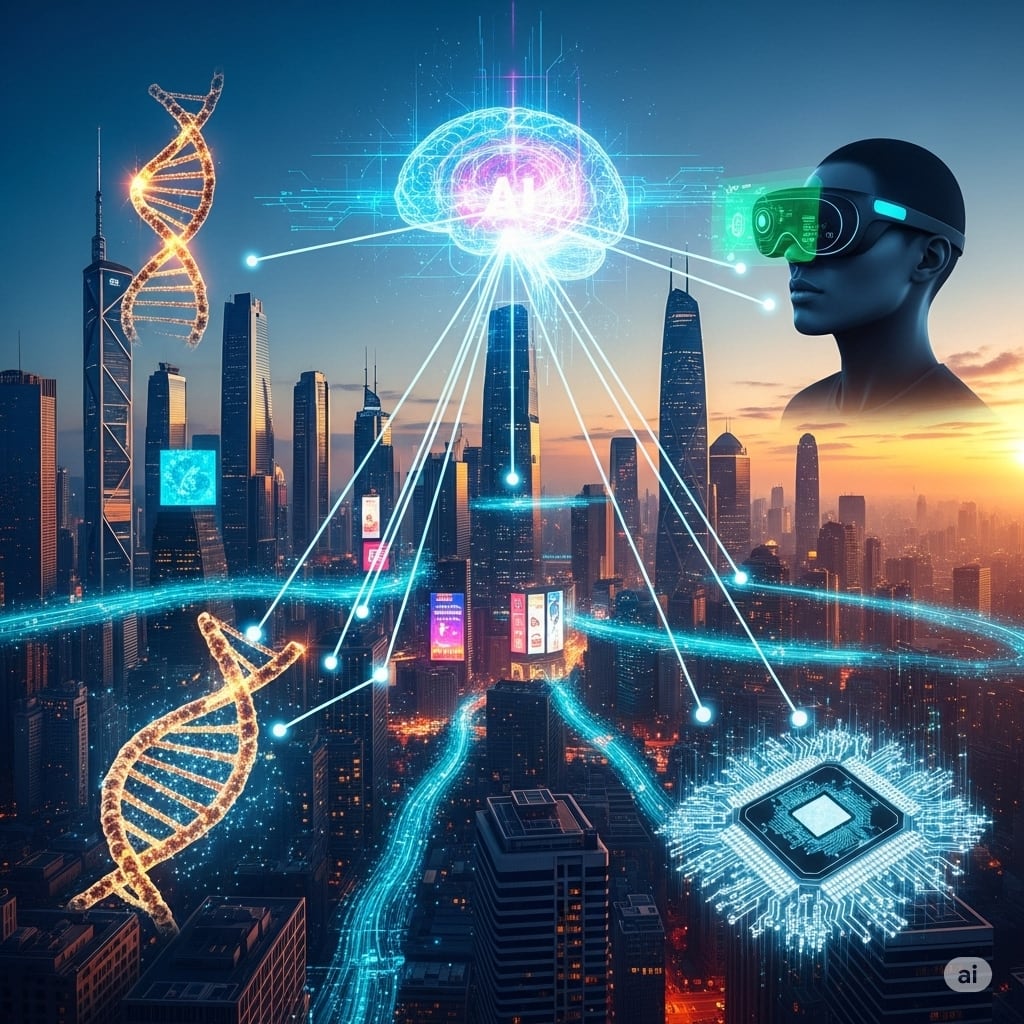The Evolution of AI: From Generative to Agentic and Embodied
The conversation around Artificial Intelligence has shifted significantly. While generative models that create text, images, and code are now standard tools, the frontier has moved on to more autonomous and integrated forms of AI.1
• What’s Happening Now (Late 2025): The primary focus is on Agentic AI. These are AI systems that can do more than just respond to a prompt; they can take action.2 An AI agent can understand a complex goal (e.g., “plan and book a complete vacation to Japan for next spring, optimizing for cost and cultural experiences”), break it down into steps, use various apps and websites, and execute the plan with minimal human intervention.3 Businesses are heavily investing in this for automating complex workflows, from supply chain management to personalized marketing campaigns.4
• What’s Next:
o Embodied AI: The next major leap is AI leaving the cloud and entering the physical world. We’ll see this in advanced robotics, where AI models control robots that can navigate and interact with complex, unpredictable environments like warehouses, hospitals, and homes.
o AI for Science: AI is becoming an indispensable tool for scientific discovery.5 It’s being used to design novel proteins, discover new materials with specific properties, and model complex systems like climate change, dramatically accelerating the pace of research and development.
AR and the Rise of the Spatial Web
Augmented Reality (AR) is steadily moving from a niche technology to a fundamental layer of our digital interaction, often referred to as the “Spatial Web” or “Spatial Computing.”6
• What’s Happening Now (Late 2025): The hardware is becoming more practical. AR glasses are getting lighter, with longer battery life and more intuitive controls, making them viable for all-day use in professional settings.7 The “killer app” is currently in the enterprise sector: remote assistance for technicians, surgical overlays for doctors, and collaborative 3D design for engineers.
• What’s Next:
o AI-Powered AR: The fusion of AI and AR is the key. Your future AR glasses won’t just overlay information; an onboard AI will see what you see, understand the context, and provide relevant information in real-time.8 For example, you could look at a plant, and the AI will identify it and tell you how to care for it, or look at a product in a store and instantly see reviews and price comparisons.9
o Shared, Persistent AR Worlds: The next step is creating a shared digital layer over the physical world. This will allow for massive, multi-user AR experiences, transforming navigation, gaming, and social interaction.
Beyond AI and AR: The Other Pillars of a Tech-Forward Future
The “Beyond” is where things get truly transformative, as developments in other fields provide the foundation for AI and AR to reach their full potential.
1. The Bio-Digital Frontier: The line between biology and technology is blurring.
o What’s Happening Now: AI-driven drug discovery is in full swing, cutting down the time it takes to develop new medicines.10 Personalized medicine, where treatments are tailored to your unique genetic code, is moving from theory to practice in specialized areas like oncology.11
o What’s Next: Brain-Computer Interfaces (BCIs) are advancing rapidly.12 While initially focused on restoring function for people with paralysis, the technology is attracting massive investment for broader applications, potentially enabling thought-controlled interaction with devices in the distant future.
2. The Quantum Transition: Quantum computing is no longer purely theoretical.
o What’s Happening Now: The most immediate impact isn’t from the quantum computers themselves, but from the race to protect against them. Governments and corporations are urgently implementing Post-Quantum Cryptography (PQC) to secure data from future quantum attacks.13
o What’s Next: We’ll see the first wave of commercially viable problems being solved by quantum computers, particularly in materials science and pharmaceutical research, where simulating molecules is a perfect use case for their power.14
3. Ambient Computing and Next-Gen Connectivity (6G): The idea of “the computer” as a device is vanishing.
o What’s Happening Now: Our world is filled with smart devices (IoT), but they often operate in their own separate ecosystems. The push is towards “ambient computing,” where these devices work together seamlessly, with AI acting as the orchestrator.15
o What’s Next: Research and development into 6G is in full swing. The promise of 6G is not just faster speeds but near-zero latency and the ability to connect billions of devices.16 This is the infrastructure that will be essential for a world of truly autonomous vehicles, massive AR overlays, and real-time smart cities.
In short, the future is about convergence. AI makes AR smarter, quantum computing will accelerate AI research, and the bio-digital frontier opens up entirely new realms for technology to explore—all powered by a seamless, interconnected network. We are moving from a world where we use devices to one where we inhabit an intelligent, augmented reality.
